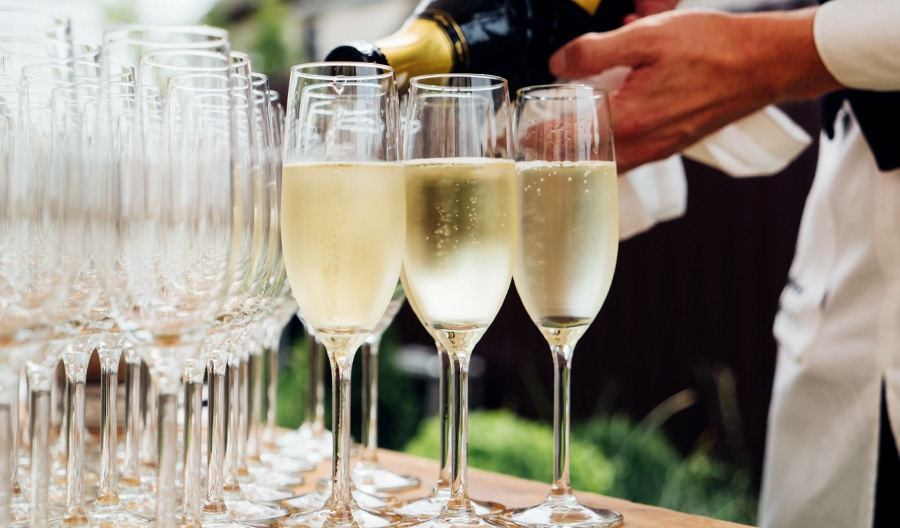In the world of sparkling wine, Champagne is the cream of the crop. Produced in its eponymous region of France, these world-class bubbles add a touch of luxury to any holiday, celebration, or simple happy hour at home. However, navigating the world of Champagne labels can be somewhat tricky.
You’ve likely heard the terms brut, extra brut, doux, and more used to describe what you’re drinking. What exactly do these terms tell you? The short and simple answer: how dry or sweet the wine is.
Brut Champagnes are kind of the Goldilocks of bubbles, in that they’re not too dry and not too sweet. They do lean toward the drier end of the spectrum—and are drier than Champagnes deemed “dry” or even “extra dry”—but are sweeter than those termed “extra brut.” Because of this middle-ground versatility, it's no surprise that these beautifully balanced wines have garnered their place as go-to options for wine professionals and consumers alike. Here is what to know about these bottles of bubbly.
What Is Brut Champagne?
Brut Champagne is a style of sparkling wine that is classified by its level of dosage (or added sugar) upon bottling.
Where Does Brut Champagne Come From?
As with all true Champagnes (no matter their level of dryness or sweetness), brut Champagne is always produced in the Champagne region of northern France.

How Is Brut Champagne Made?
All Champagnes are made via the méthode traditionnelle (traditional method), meaning that the wines undergo a secondary fermentation in bottle. First, a still (non-sparkling) wine is made using standard fermentation and vinification methods. After a determined period of aging, the wine is then bottled (generally under a crown cap), with a bit of additional sugar and yeast added. This is known as the “liqueur de tirage.” The combination of sugar and yeast ignites a secondary fermentation in the bottle, which traps released carbon dioxide, a byproduct of fermentation, in the bottle, and gives Champagne its signature fizz.
Once Champagne has finished aging, winemakers disgorge their bottles and add a certain amount of sugar to the wine to achieve its final flavor profile. This is where Champagne wines get their designation—in this case, brut. The various classifications and their corresponding sugar levels are as follows:
Extra brut: 0 to 6 g/L (grams per Liter) of residual sugar
Brut: 0 to 12 g/L (grams per Liter) of residual sugar
Extra dry: 12 to 17 g/L (grams per Liter) of residual sugar
Dry: 17 to 32 g/L (grams per Liter) of residual sugar
Demi-sec: 32 to 50 g/L (grams per Liter) of residual sugar
Doux: more than 50 g/L (grams per Liter) of residual sugar
We know what you must be thinking: Dry is actually sweeter than brut? In sparkling-wine terms, yes. It’s confusing, but we didn’t make the rules. Note that wines bottled with no added sugar are labeled “brut nature” or “zero dosage.”
What Does Brut Champagne Taste Like?
Although 12 grams per Liter may sound like a lot of sugar, these wines actually taste pretty dry on the palate. Culturally, our perception of “sugar” and “sweet” is based on high levels of sugar, so fear not! These wines taste dry, delicious, and promise to elevate any gathering where wine consumption is involved.
What Are Good Food Pairings with Brut Champagne?
Because of their ripping acidity, strong backbones, and balanced sugar additions, brut Champagnes are some of the most food-friendly wines available. These wines pair with an astonishing variety of cuisines, from fried appetizers to potato chips to poultry-based main courses and beyond. Caviar is, of course, a classic accompaniment, but we think it’s even better removed from such rarified realms and consumed with more everyday food. Our suggestion: Grab your favorite salty snack (potato chips, French fries, or fried chicken) and pop open a bottle of brut Champagne for a seriously delicious food pairing.

